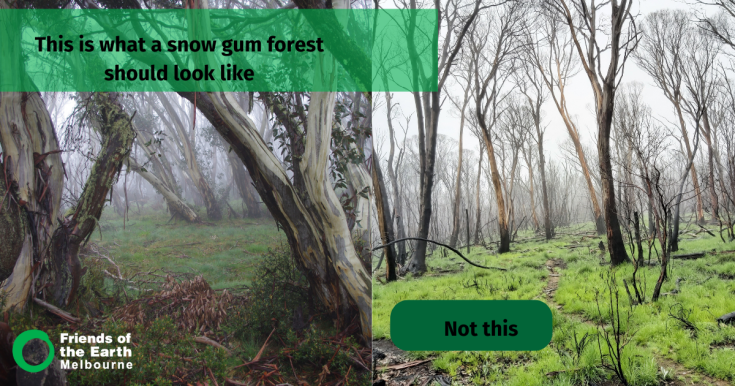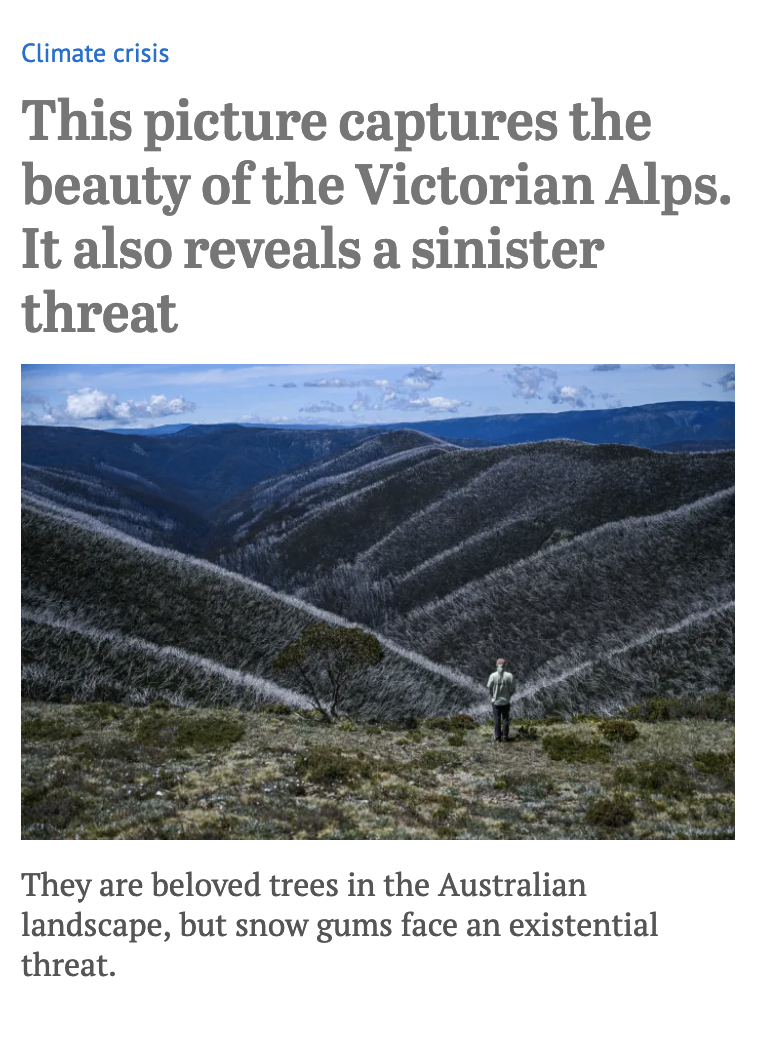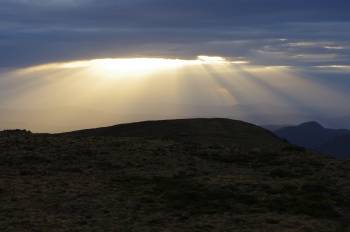You may have seen today’s story by Miki Perkins in The Age here. It considers the threats posed to snow gum woodlands (and other mountain forests) by more frequent and intense bushfires.
The story says ‘the global climate crisis, driven by humans burning fossil fuels, has brought a new threat to these mountain peaks: more frequent and more intense bushfires.
Because snow gums have not evolved to cope with these conditions, experts say the nature of Australia’s high mountain landscapes are changing, and the ecological collapse of snow gum woodlands – the abrupt decline or change of this ecosystem – is happening before our eyes’.
Snow Gums (Eucalyptus pauciflora) are the classic tree of the Australian High Country. They are profoundly different to the trees found in mountain areas in other parts of the world, and give a uniquely Australian sense to our high country. However, they are at risk from dieback and climate change driven bushfires.
Like most eucalypt species, the snow gum can survive fire. However, climate change is leading to more frequent and intense fire, which is causing more death of trees and changes to forest structure. And while dieback, caused by a native beetle, is a natural occurrence, the dieback is getting worse and more widespread because climate change is making winters warmer and summers drier and hotter.
We acknowledge that these forests exist in the Cultural Landscapes of the unceded sovereign lands of Victorian Traditional Owners.
Background
While most snow gums in Victoria are included in national parks, we are on the verge of losing the landscapes that we spent decades protecting.
In recent decades, climate-fuelled bushfires have devastated huge areas of the snow gum forests. There were significant fires in the Victorian High Country in 1998, 2002/3, 2006/7, 2013 and 2019/20. More than 90% of Snow Gum habitat has been burnt at least once in the last 20 years. New research from Latrobe University shows that long-unburnt snow gum forests are now exceedingly rare (comprising less than 1% of snow gum forests in the Victorian Alps).In recent years, Friends of the Earth (FoE) has been mapping the health of snow gum woodlands across north eastern Victoria and found a growing number of areas facing ecological collapse – that is, the loss of snow gum, with only grass and scrub remaining in once forested areas.
As climate scientist Michael Mann describes it, we are now seeing climate change play out in real time.
But we still have time to ensure the survival of this important tree.

Support the snow gums
We need the state government to intervene to protect these threatened forests. The first step in a meaningful government response should be to authorise an investigation into the ecological health of the forests, which would make recommendations to the state government about what to do next.
This investigation can be done quickly and at little cost, and will provide a direction for longer term government action to protect snow gums. We already know that if we can exclude fire from snow gums as they recover, there is a good chance we will see the development of old forests again. Groups like FoE have ideas on how to respond to the threats (you can read our rescue plan for the snow gums here) but state government needs to take action to assess the threat and then allocate resources.
Take action
Please send an email to the state environment minister the Hon Steve Dimopoulos and the State government to take steps to protect the iconic Snow Gum forests.
Learn more
The FoE report, An Icon at Risk, Current and Emerging threats to the Victorian High Country, released in 2021 (and available here) highlights the many risks faced by the Alps, including the potential loss of the Snow Gum forests.
You can read about our work in the high country here.
Support our work
If you like what we do, please consider supporting our work with a tax deductible donation.
























































Leave a comment